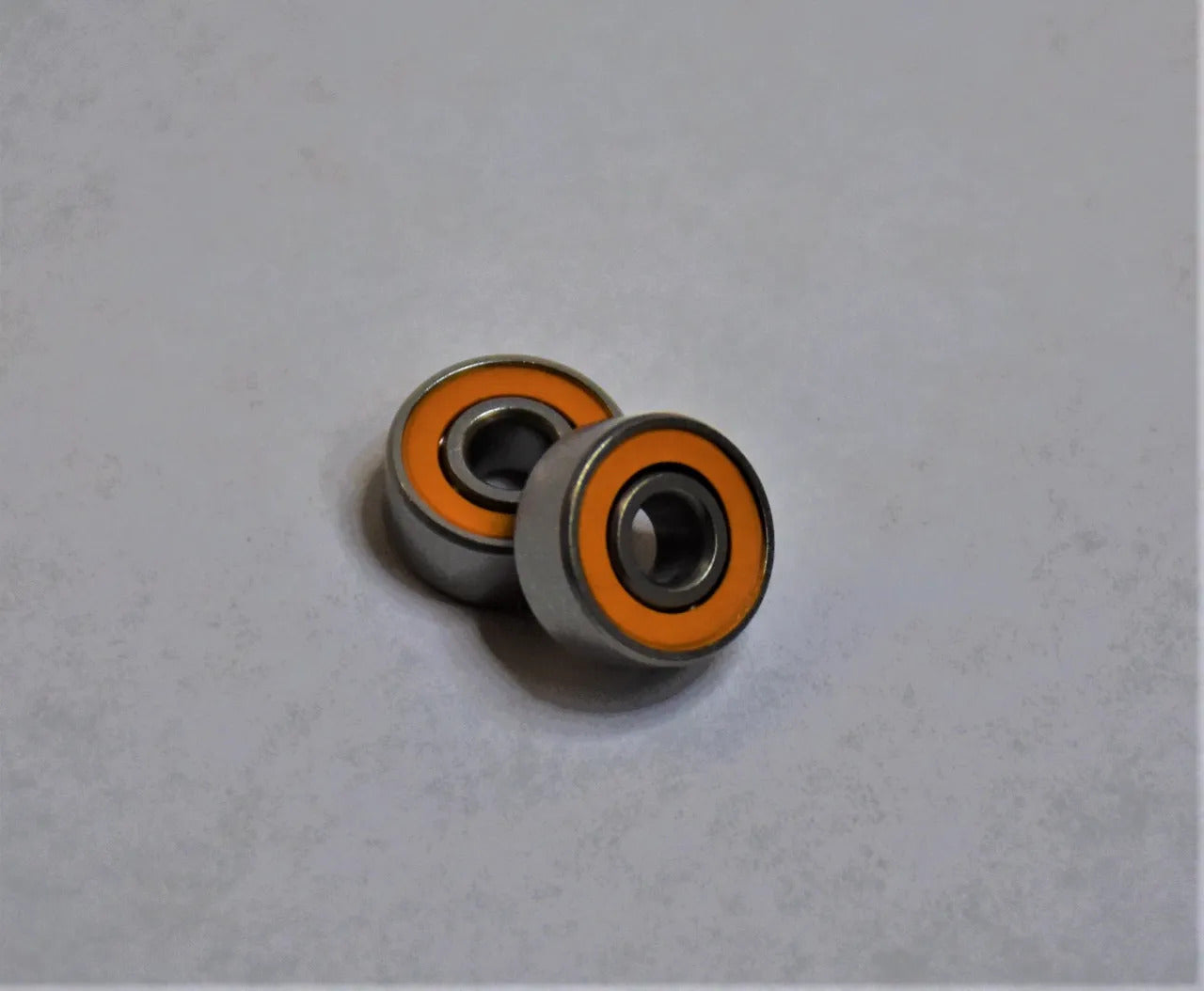Ceramic bearings continue to be talked about as if it is the holy grail of performance in motors. There is certainly a big gain when ceramic bearings are used in an entire car and chassis. Replacing 15 or so bearings in car is very evident just spinning the wheels and on the track the car performs like it lost 25% of its mass.
Full Ceramic sounds just like what it is, a bearing in which the race and the balls are a true ceramic material. These bearings have the lowest rolling resistance of any bearing system using contact between the components. And while the type of ceramic materials have become better, they are sensitive to impact forces, meaning they break easily when struck. Besides very high prices (compared to steel ball bearings), they are not suitable for our hobby.
A Hybrid Ceramic bearing uses balls made of silicon nitride ceramic material (and other special ceramics) and steel races which are coated with a special material. The rolling resistance is higher than a full ceramic ball bearing, but impact damage resistance is greatly increased and prices are more reasonable, and are very good compromise.
In motor testing on my dyno, I do not see consistent gains when using ceramic bearings in the modified motor types on dirt. In testing motors multiple times, I see a 1% gain sometimes, a 5% another, and then another time -3% gain (or loss!). When asked about dyno tuning, I always say it gives you a pointer in a direction for gains, not a definitive absolute of 'this motor is better than a different motor'. I see trends when testing motor designs when I have enough to compare, such as when using my motor designs as I have hundreds to test and then look at all the data. I then can say that yes this setup is better than the other setup. In the end, motor testing really involves on track testing with well setup cars and talented drivers. I am fortunate to have some of the best drivers, and their cars, to do the down and dirty work of what motor works by running cars on a track.
In drag race 2 pole motors (4.0, 4.5, 3.0, 3.5, 2.5 turns), here is instance it may be worth to do, but adhere to regular application of a good synthetic lube (a little dab will do it!).
A little different story for ROAR spec motors in 25.5, 21.5, 13.5, 17.5 and 10.5 turns on any surface. In these cases, if you need the best performance (and you are opting for a Team build also), then hybrid ceramic bearings are worth the cost but at increase in price. Just pay attention to lube cycles (one-half drop of quality synthetic lube) every 10 heats/mains. The key is very light lube per application.

